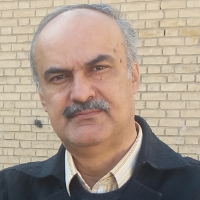Application of Artificial Neural Network and Non-Destructive CT scan Test in Estimating the Amount of Pear Bruise Due To External Loads
Author(s):
Article Type:
Research/Original Article (دارای رتبه معتبر)
Abstract:
Pear damage is one of the main causes of the loss of fruit quality. Bruises occur during dynamic and quasi-static loading, which causes damage to the healthy tissue of the fruit. In this research, pears were placed under quasi-static loading (thin edge and wide edge) and dynamic loading. Then they were stored in 5, 10 and 15 days and after each storage period, using the CT-Scan non-destructive technique the bruise percentage was estimated. In this study, multi-layer perceptron artificial neural network (MLP) by 2 hidden layers and 3, 5, 7 and 9 neurons hidden layers was selected for modeling of loading force and storage period to predict bruise rate. The highest R2 values for training and testing for quasi-static loading of thin edge and wide edge in a 9-neural network were training Thin-edge=0.91, test Thin-edge =0.99 and training Wide-edge=0.95, test Wide-edge =0.99. For the dynamic loading of a network with 3 neurons in the hidden layer has the highest value (training Wide-edge=0.98, test Wide-edge =0.99). For learning (9 neurons) quasi-static loading thin edge (7 neurons) quasi-static loading wide edge and dynamic loading (7 neurons) have been the best network. According to the results obtained for R2, RMSE and learning cycle, it can be said that the neural network has the ability to predict the bruise percentage to an acceptable level for pears.
Keywords:
Language:
Persian
Published:
Research and Innovation in Food Science and Technology, Volume:8 Issue: 2, 2019
Pages:
177 to 188
https://www.magiran.com/p2013994
سامانه نویسندگان
مقالات دیگری از این نویسنده (گان)
-
Design, Manufacturing, and Evaluation a Greenhouse Misting System for Edible Mushroom Production
*, Reza Naseri, Mohammadjavad Mahmoodi, Mohammad Vahedi Torshizi
Biomechanism and Bioenergy Research, Summer and Autumn 2024 -
Investigation of the Improvement of Physical and Chemical Changes in Banana Fruits under Different Lighting and Packaging Conditions
Fatemeh Aboutalebi, *, Mohammad Vahedi Torshizi, Feryal Varasteh
Biomechanism and Bioenergy Research, Summer and Autumn 2024



